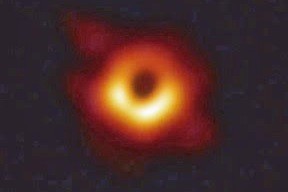Supermassive black hole, Astronomers release new image

PARIS: The astronomers who gave the world its first credible glimpse of a black hole have created another landmark picture, this time capturing the polarised light swirling around the magnetic fields of the same star-eating beast.
However, it is not just a pretty image.
Never before has polarisation — the property that causes light waves to vibrate in a single plane — been measured so close to a black hole’s edge.
More than 300 scientists announced Wednesday in a pair of studies that the latest findings, based on data obtained by the Event Horizon Telescope (EHT) in 2017, are crucial to understanding how a galaxy can project streams of energy thousands of lightyears outward from its centre.
China finally wants astronauts to stay on the moon for longer.
An assistant professor at Radboud University in the Netherlands and The co-author Monika Moscibrodzka said.
“We are now seeing the next crucial piece of evidence to understand how magnetic fields behave around black holes,”
He added, “Activity in this very compact region of space can drive powerful jets that extend far beyond the galaxy.”
After broadcasting the outstanding picture of the supermassive black hole at the heart of galaxy M87, the researchers found out that a substantial percentage of its surrounding light was polarised.
“The polarisation of light carries information that allows us to better understand the physics behind the image we saw in April 2019,” the co-author Ivan Marti-Vidal who is a researcher at the University of Valencia, explained.
– Virtual Earth-sized telescope –
It took many years to process and analyse the data. He also said that the result is “a major milestone.”
When light is spewed in hot areas of space where magnetic fields exist, it becomes polarised.
Astronomers are able to detect the regions around a black hole better by gazing at how the light is polarised.
The magnetic field lines at the black hole’s inner edge can now be mapped.
A black hole’s matter is so dense that it creates a gravitational field that even light cannot escape. Earth can fit within a thimble at the same compression size.
That is why black holes are difficult to see. They are oftentimes detected by the radiation generated when their gravity pulls in enclosing gases, a process called accretion
















